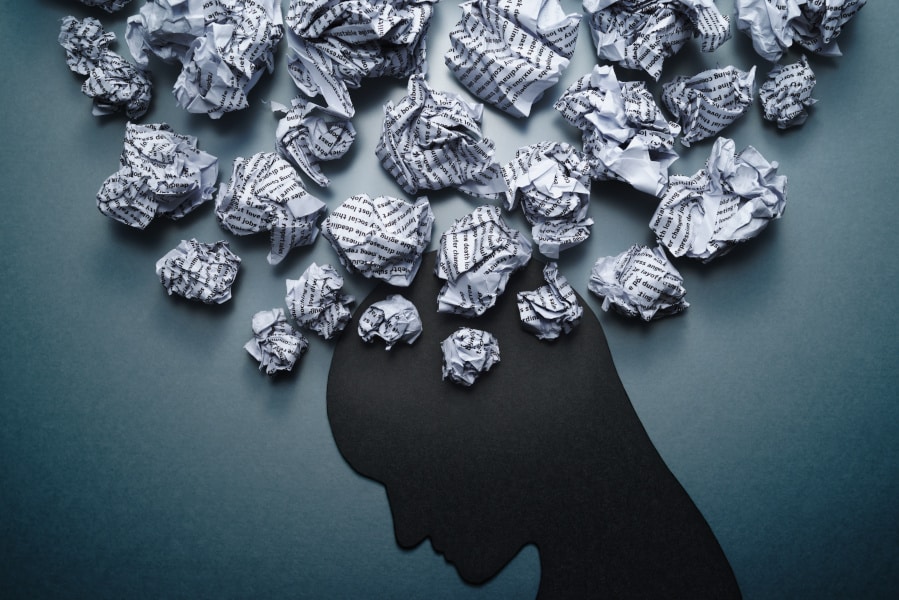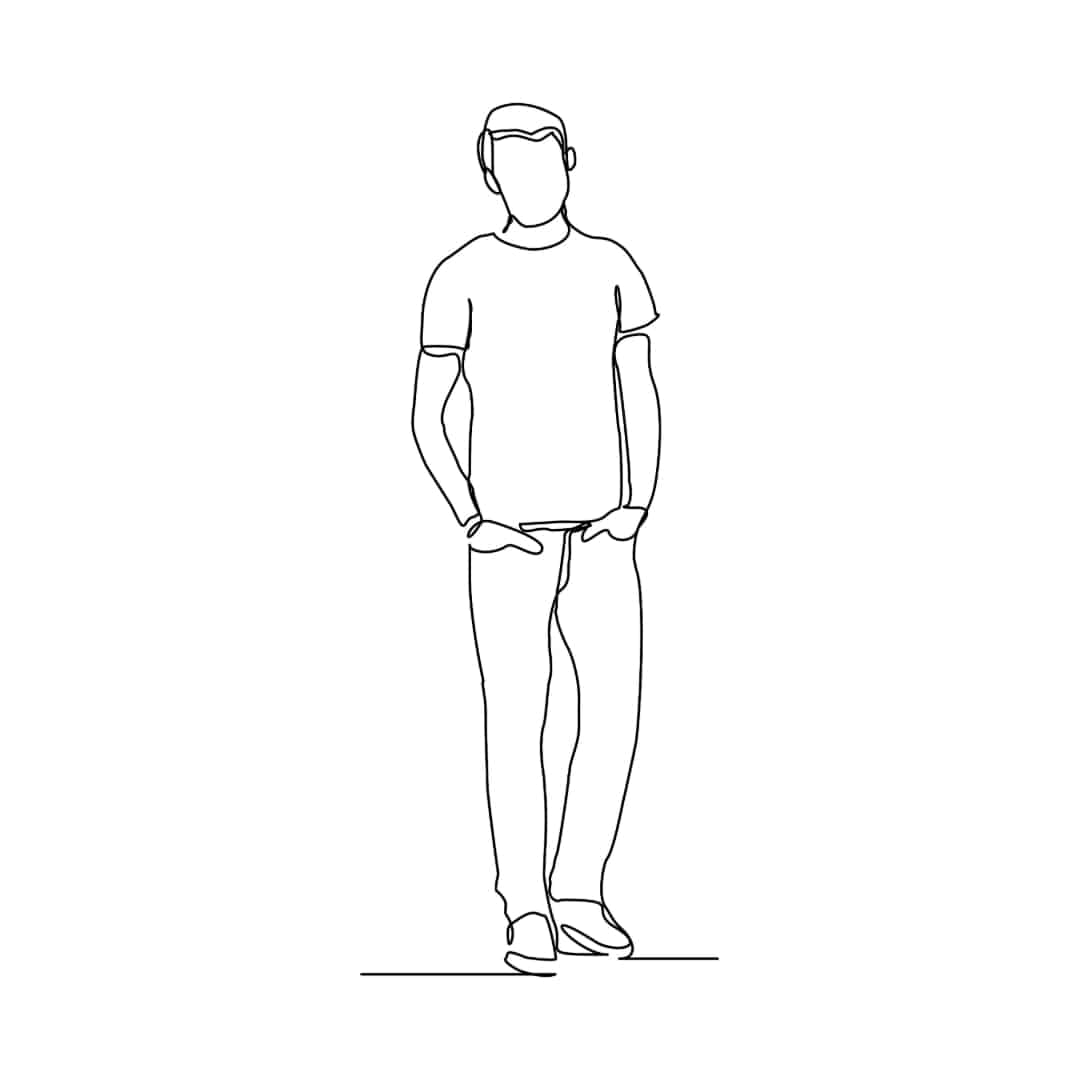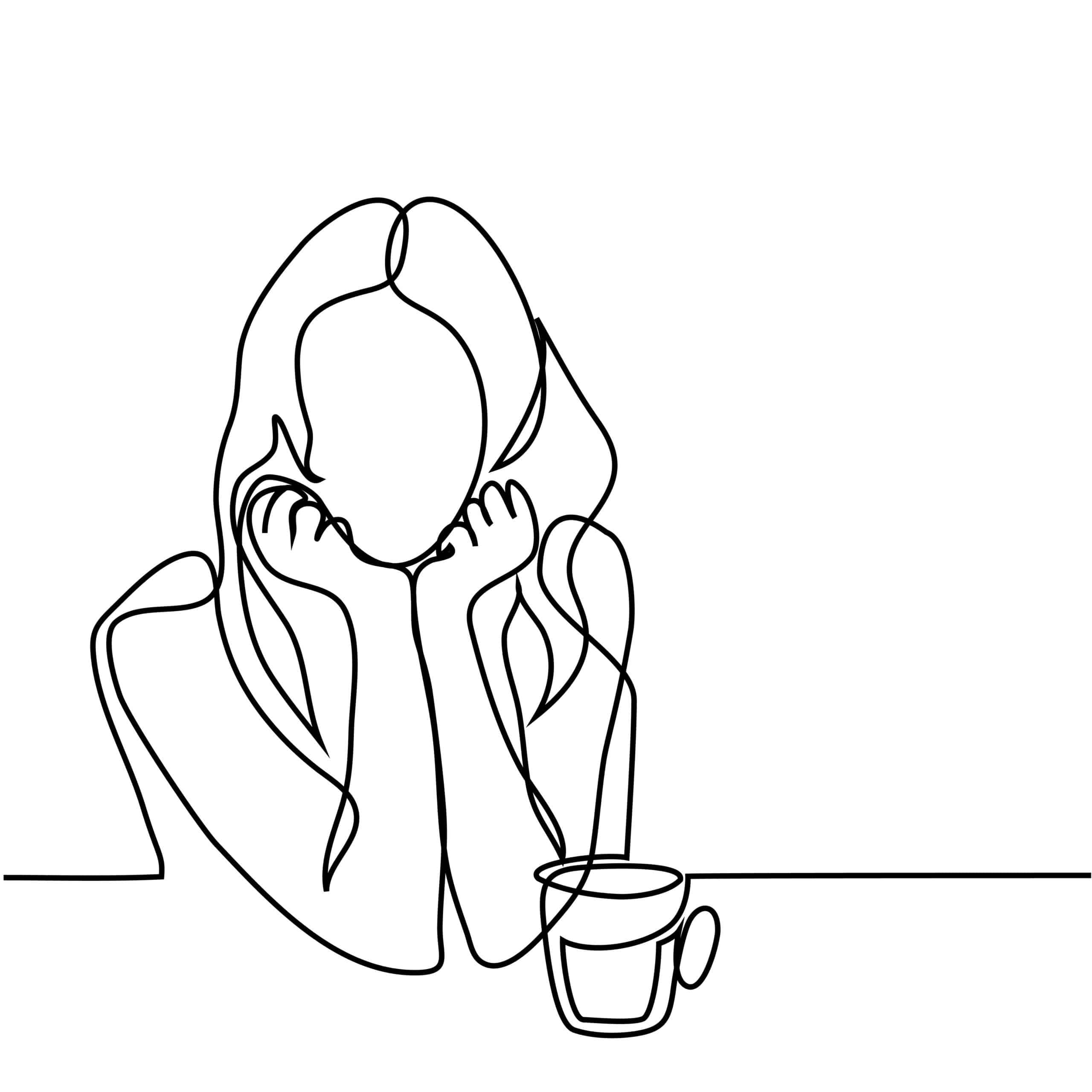Despite the increasing awareness, education, knowledge, treatment, and understanding of psychological disorders, there is still no clear-cut, quick fix, and uniform method available to diagnose and/or eliminate (or at least reduce) mental illnesses and psychological disorders. Anxiety disorders and bipolar disorder are two of the most common mental illnesses that prevent an individual from functioning normally. While most individuals may arguably prefer to remain ignorant of the existence of anxiety disorders and/or bipolar disorder, the fact is that more than 23 million individuals suffer from anxiety disorders (Harvard, 1) while more than 3 million individuals suffer from bipolar disorder (Hollandsworth).
This paper analyzes and examines anxiety disorders and bipolar disorder. Part II discusses the various types of anxiety disorders and the treatments available for such disorders. In Part III, bipolar disorder and the treatments available for such disorder is evaluated. Lastly, this paper concludes with recommendations for enhancing and improving the awareness, knowledge, treatment, and understanding of anxiety disorders and bipolar disorder.
ANXIETY DISORDERS
VARIOUS TYPES OF ANXIETY DISORDERS
In Exploring Psychology, David G. Myers outlined the five different types of anxiety disorders: (1) generalized anxiety disorder (GAD); (2) obsessive compulsive disorder (OCD); (3) panic disorders; (4) phobias; and (5) post-traumatic stress disorder (PTSD). Accurate diagnosis is essential as treatment varies from one disorder to another. Depending on the extent, history, severity, and type of anxiety disorder, cognitive-behavioral therapies or medication, whether alone or in proper combinations may significantly alleviate the distress and dysfunction that anxiety disorders frequently cause.
According to the National Institute of Mental Health, generalized anxiety disorder (GAD) afflicts about 3-5% of adults during any given year; begins in early childhood or adolescence (but may start at any age); fluctuates, worsening at times, and persists over many years; and is twice as likely to occur in women than men. Individuals who suffer from GAD often experience chronic, exaggerated tension and/or worry for a period of six months or longer (Myers). What distinguishes GAD from situation-specific anxiety that most individuals experience (i.e., butterflies in the stomach before public speaking) is that it is either completely unfounded or much more severe (Myers). Individuals who suffer from GAD frequently worry excessively about family, health, loved ones, money, or work, even when there is no evidence of trouble (Myers). In addition, GAD often results in physical symptoms like fatigue, headaches, hot flashes, insomnia, irritability, and/or muscle tension (Myers).
Obsessive-compulsive disorder (OCD) is characterized by intrusive, recurrent, and/or unwanted ideas, images, or impulses that may be viewed as horrible, nasty, silly, or weird and a compulsion or urge to do something that will alleviate the discomfort (whether actual or perceived) caused by the obsession (Myers). Examples of OCD include repetitive, strict ritual behaviors such as checking doors and/or windows; cleaning; counting; dressing and/or undressing; hand washing; and/or locking and unlocking doors and/or windows (Myers). Individuals who suffer from OCD perform these rituals in hopes of either eliminating or preventing obsessive thoughts (Myers). Likewise, certain psychological disorders that lead individuals being unable to separate fiction from reality, OCD sufferers know that their obsession does not reflect and/or relate to actual risks (Myers).
Individuals who suffer from panic disorders generally suffer from repeated and unexpected episodes of intense and unbearable fear that is often accompanied by physical symptoms like abnormal distress; chest pain; dizziness; heart palpitations; and shortness of breath (Myers). Panic disorder is frequently not diagnosed until costly and extensive medical procedures fail to provide an individual with a correct diagnosis or relief of symptoms (Myers). What makes panic disorder rather hard to diagnose, predict, and treat is the fact that it is often marked by the appearance of unexpected panic attacks (Myers). Panic attacks are defined as the sudden appearance of at least four of these symptoms: (1) accelerated heart rate or palpitation; (2) chest pain or discomfort; (3) choking; (4) diarrhea, nausea, or stomachache; (5) dizziness, faintness, or unsteadiness; (6) fear of dying, going crazy, or losing control; (7) feelings of detachment from environment, strangeness, or unreality; (8) flushing or chills; (9) numbness or tingling sensations; or (10) sense of being smoldered or shortness of breath (Myers).
Phobias involve constant, intense, and unrealistic anxiety in response to particular external situations such as being near a small dog, looking down from high elevations, public speaking, etc. (Myers). Individuals who suffer from phobias generally either avoid situations that trigger their anxiety or stress or endure the situations with great distress (Myers). Like individuals who suffer from OCD, individuals with phobias recognize that their anxiety is excessive and perhaps irrational (Myers). Two of the most common phobias are agoraphobia (i.e, fear of being trapped without an easy and graceful way to leave if anxiety should strike, fear of the marketplace or open spaces) and social phobia (i.e., fear of being humiliated in a social setting like giving a speech, meeting new people, or talking to the boss) (Myers).
Individuals who suffer from post-traumatic stress disorder (PTSD) often develop symptoms after being exposed to a frightening or traumatic event or ordeal in which grave physical harm occurred or was threatened (Myers). Examples of such frightening or traumatic events which may lead to an individual developing PTSD are car accidents; military combat; natural or man-made disasters; mugging; or rape (Myers). Most individuals try to avoid any reminders or thoughts of the event or ordeal, but constantly re-experience the event or ordeal in the form of flashbacks, frightening thoughts, memories, or nightmares (Myers).
TREATMENTS AVAILABLE FOR ANXIETY DISORDERS
There are a multitude of treatments available for generalized anxiety disorder (GAD), obsessive-compulsive disorder (OCD), panic disorders, phobias, and post-traumatic stress disorder (PTSD). Depending on the extent, history, severity, and type of anxiety disorder, cognitive-behavioral therapies or medication, whether alone or in proper combinations may significantly alleviate the distress and dysfunction that anxiety disorders frequently cause. According to Harold Bernard, author of Psychology of Learning, anxiety disorders are quite responsive to counseling and a wide variety of psychotherapies. Cognitive-behavioral therapies evaluate the apparent cause and effect relationship among behaviors, feelings, and thoughts and implement relatively straightforward techniques to lessen the symptoms and prevent (or at least reduce) avoidance and/or escapist behavior (Bernard). A vital element of psychotherapy is to increase exposure to the situations and/or stimuli that provoke an individual’s anxiety (Bernard).
Medication is the other most frequently implemented technique used to treat anxiety disorders. General anxiety disorders are primarily treated with benzodiazepines (i.e., Alprazolam, Clonazepam, Diazepam, and Lorazepam) since psychotherapy is generally not beneficial due to the fact that no-clear cut, uniform situations trigger GAD (Myers). Obsessive-compulsive disorder is often treated with anti-depressants (i.e., Clomipramine; Fluoxetine; Fluvoxamine; Paroxetine; or Sertraline) (Myers). Anti-anxiety drugs (i.e., Paxil, Xanax), anti-depressants and benzodiazepines are frequently used to treat panic disorders (Myers). Like OCD, exposure therapy, i.e., repeatedly exposing an individual to whatever triggers the desire to engage in OCD or whatever triggers the panic attack, often helps diminish fear and lessen discomfort (Myers). Post traumatic stress disorder is usually treated with anti-anxiety drugs, anti-depressants, or behavioral therapy (Myers).
BIPOLAR DISORDER
STAGES OF MANIA
Bipolar disorder is perhaps one of the most tragic mental illnesses, causing individuals to alternate between feelings of depression and mania. What makes bipolar disorder particularly troublesome is that it creates an emotional roller coaster that frequently imposes tremendous emotional and physical stress on an individual. Symptoms of a depressive episode include anhedodonia; appetite and sleep disturbances; difficulty concentrating, focusing, or thinking; disturbances; feelings of guilt, hopelessness, and worthlessness; indecision; and/or recurrent thoughts of death or suicide (Hollandsworth). Manic episodes are characterized by a decreased need for sleep; denial; elevated or irritable mood; extreme irritability and/or lack of concentration; increased energy and/or sex drive; poor insight and judgment; and/or reckless or irresponsible behavior (Hollandsworth).
There are generally three stages of mania. Hypomania is the first stage and is marked by individuals feeling unusually assertive, energetic, and extroverted (Hirschfield). The next stage of mania is characterized by euphoric grandiose, loss of judgment, and paranoid or irritable moods (Hirschfield). Delusions with often paranoid themes mark the final stage of mania (Hirschfield). In this stage, individuals may become overly hyperactive and violent, and their speech is generally more rapid than normal (Hirschfield). Sometimes both depressive and manic symptoms arise at the same time, i.e., a mixed episode (Hirschfield). In addition, rapid cycling mania is another strand of bipolar disorder and occurs when an individual suffers four or more distinct and separate depressive and/or manic episodes within one year (Hirschfield).
TREATMENTS AVAILABLE FOR BIPOLAR DISORDER
As is the case with anxiety disorders, a variety of treatments are available for bipolar disorder. Currently, doctors prescribe the following types of medication to individuals who suffer from bipolar disorder: anti-convulsants (i.e., Carbamazepine, Valproate); anti-depressants (i.e., Buprpoin, Monoamine oxidase inhibitors, Selective serotonin re-uptake inhibitors, and Tricyclics); anti-psychotics; benzodiazepines; mood stabilizers (i.e., Lithium); and neuroleptics (i.e., Chlorpromazine, Haloperidol). What makes bipolar disorder particularly hard to control and/or treat is the fact that individuals often need to take various combination of drugs before the correct prescription may be ascertained.
In addition to the above-mentioned medications, there are other alternatives used to treat bipolar disorder. Light therapy is one of the most common forms of treatment. One study showed that light therapy resulted in an average 90.3% improvement in individuals who suffered from bipolar disorder, with no incidence of either hypomania or mania (Hopkins and Gelenberg). Another study involved a four week treatment of bright morning light treatment for individuals who suffered from bipolar disorder and seasonal affective disorder (Baur, Kurtz, Rubin, and Markus). This study found that there was a statistically meaningful reduction in depressive symptoms, with the maximum anti-depressant effect of light not being reached until the fourth week (Baur, Kurtz, Rubin, and Markus).
Another popular treatment for individuals who suffer from bipolar disorder is electro-convulsive shock therapy (ECT). Due to its intrusive nature, ECT is generally only used for individuals who are severely catatonic, homicidal, medically compromised, psychotic, or suicidal (Black et al.). One study found marked improvement in 78% of individuals treated with ECT, compared to 62% of individuals treated with only lithium and 32% of individuals who received neither ECT nor lithium (Black et al.). Group psychotherapy is another option used to treat individuals who suffer from bipolar disorder. Benefits of group psychotherapy include heightened lithium compliance, lowered denial regarding the extent and nature of the illness, and raised awareness of both external and internal factors leading to depressive and manic episodes.
CONCLUSION
Although there is increased awareness, education, knowledge, treatment, and understanding of psychological disorders, there is still no clear-cut, quick fix, and uniform method available to diagnose and/or eliminate (or at least reduce) mental illnesses and psychological disorders. Anxiety disorders and bipolar disorder are two of the most common mental illnesses that prevent an individual from functioning normally. While medication is the most commonly utilized and widely accepted form of treatment for both anxiety disorders and bipolar disorder, mental health professionals are gradually embracing the concept that the most effective form of treatment may be a combination of medication and psychotherapy.
BIBLIOGRAPHY
- Bauer, M.S., Kurtz, J.W., Rubin, L.B., and Marcus, J.G. (1994). Mood and Behavioral Effects of Four-Week Light Treatment in Winter Depressives and Controls. Journal of Psychiatric Research. 28, 2: 135-145.
- Bauer, M.S., Whybrow, P.C. and Winokur, A. (1990). Rapid Cycling Bipolar Affective Disorder: I. Association With Grade I Hypothyroidism. Archives of General Psychiatry. 47: 427-432.
- Bernard, Harold W. (1965). Psychology of Learning and Teaching. New York: McGraw-Hill Book Company.
- Black, D.W., Winokur, G., and Nasrallah, A. (1987). Treatment of Mania: A Naturalistic Study of Electroconvulsive Therapy Versus Lithium in 438 Patients. Journal of Clinical Psychiatry. 48: 132-139.
- Cain, Dr. Arthur H. (1970). Young People and Neurosis. New York: The John Day Company.
- Fagan, James W. (1999). Introduction to Psychology. California: Wadsworth.
- Fogiel, M. (1998). The Best Test Preparation for the Advanced Placement: Psychology. New Jersey: Research and Education Association.
- Gasperini, M., Gatti, F., Bellini, L., Anniverno, R., Smeralsi, E., (1992). Perspectives in Clinical Psychopharmacology of Amitriptyline and Fluvoxamine. Pharmacopsychiatry. 26:186-192.
- Goodwin, F.K., and Jamison, K.R. (1990). Manic Depressive Illness. New York: Oxford University Press.
- Goodwin, Donald W. and Guze, Samuel B. (1989). Psychiatric Diagnosis. Fourth ed. Oxford University. p.7.
- Hirschfeld, R.M. (1995). Recent Developments in Clinical Aspects of Bipolar Disorder. The Decade of the Brain. National Alliance for the Mentally Ill. Winter. Vol. VI. Issue II.
- Hollandsworth, James G. (1990). The Physiology of Psychological Disorders. Plenem Press. New York and London. P.111.
- Hopkins, H.S. and Gelenberg, A.J. (1994). Treatment of Bipolar Disorder: How Far Have We Come? Psychopharmacology Bulletin. 30 (1): 27-38.
- Jacobson, S.J., Jones, K., Ceolin, L., Kaur, P., Sahn, D., Donnerfeld, A.E., Rieder, M., Santelli, R., Smythe, J., Patuszuk, A., Einarson, T., and Koren, G. (1992). Prospective Multicenter Study of Pregnancy Outcome After Lithium Exposure During the First Trimester. Laricet. 339: 530-533.
- Lish, J.D., Dime-Meenan, S., Whybrow, P.C., Price, R.A. and Hirschfeld, R.M. (1994). The National Depressive and Manic Depressive Association (DMDA) Survey of Bipolar Members. Affective Disorders. 31: pp.281-294.
- Long, Phillip W. (1994). “Bipolar Disorder.” Retrieved from htttp://www.mentalhealth.com on April 14, 2002.
- Long, Phillip W. (1994). “What is Bipolar Disorder?” Retrieved from http://www.bipolar.com/whatisBPD/intro.htm on April 14, 2002.
- Merck & Co., Inc. “The Merck Manual–Home Edition.” Retrieved from http://www.merck.com/pubs/mmanual_home/sec7/83.htm on April 14, 2002.
- Myers, David G. (1999). Exploring Psychology. Michigan: Worth Publishers.
- National Institute of Mental Health. “Quick Facts About Anxiety Disorders.” Retrieved from http://www.nimh.nih.gov/anxiety on April 14, 2002.
- Satcher, David. “Mental Health: A Report of the Surgeon General- Chapter 4.” Retrieved from http://www.surgeongeneral.gov/library/mentalhealth/ chapter4/sec2_1.htm on April 14, 2002.
- Schneier, Franklin R. Detachment and Generalized Social Phobia. The American Journal of Psychiatry (Feb. 2001).
- Schrof, Joanne M. “Social Anxiety.” SIRS Health 1 (34).
- Weinstein, Grace W. (1979). People Study People: The Story of Psychology. New York: E.P. Dutton.
- Weisman, M.M., Livingston, B.M., Leaf, P.J., Florio, L.P., Holzer, C. (1991). Psychiatric Disorders in America. Affective Disorders. Free Press.
The Villa Orlando and Pasadena Villa’s Smoky Mountain Lodge are adult intensive psychiatric residential treatment centers for clients with serious mental illnesses. We also provide other individualized therapy programs, step-down residential programs, and less intensive mental health services, such as Community Residential Homes, Supportive Housing, Day Treatment Programs and Life Skills training. Pasadena Villa’s Outpatient Center in Raleigh, North Carolina offers partial hospitalization (PHP) and an intensive outpatient program (PHP). If you or someone you know may need mental health services, please complete our contact form or call us at 407-574-5190 for more information.



